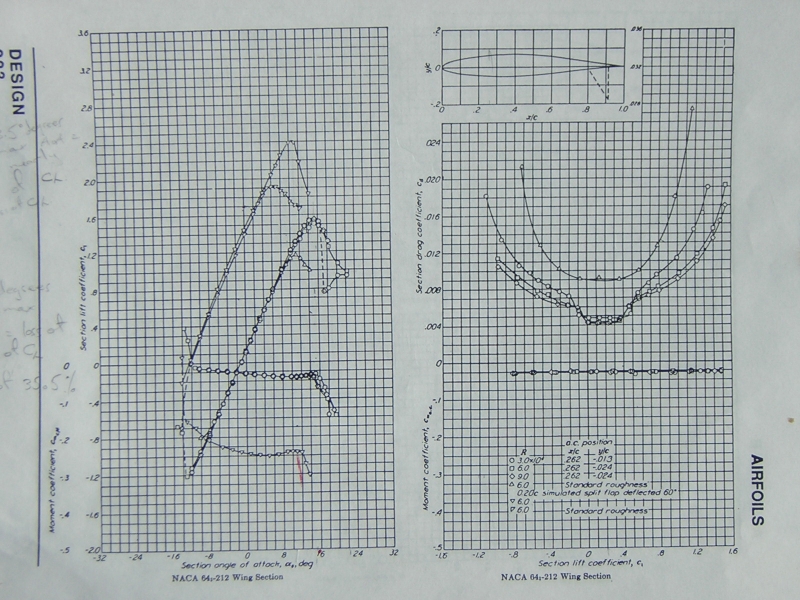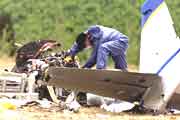|
Saluti tutti,
This is the polar of NACA 64-212, which is the
wingtip profile used for Lancair IV's and ES's. It has an unusual
characteristic in that when reaching or exceeding 22 degrees AoA, then
with reducing AoA the coefficient of lift decreases. This can be seen on the
graph as the the leftwards and downwards moving line from 22'
AoA.
With reducing AoA from 22 degrees, this line shows
the reducing coefficient of lift, until, as near as I can read it, at 17 degrees
AoA the coefficient of lift has reduced to 0.75. Then with a reduction of AoA of
only half a degree the coefficient of lift jumps (the dotted line) to
1.45 An increase in lift of around 93% (almost double) over just
half a degree of REDUCING AoA.
Inferring from this data, for an LIV or
ES even with only a small difference of wingtip's incidence, (for
the purpose of this illustration lets call it 0.5 degrees) when
reaching or exceeding 22degrees AoA, when pushing forward stick to
unstall, the first wingtip to reduce to 16.5 degrees AoA suddenly has
nearly double the lift of the opposite wingtip.
The aeroplane rolls, uncommanded. The downgoing
wing 'sees' a higher AoA and stays stalled with a coefficient of
lift of 0.75 or so, while the upgoing wing 'sees' a reduced AoA and
probably reaches the peak coefficient of lift of 1.5. The upgoing wing with
lessor AoA has a reduced coeffient of drag while the downgoing wing with the
higher AoA has an increased coefficient of drag producing yaw. The aeroplane
is stalled, and rolling and yawing into spin.
So much for reading the data and inferring
what the aeroplane may or may not do, is the effect real?
Dave Allen wrote, 15th May 2004, LML #23831: "I was
not up there exploring spins. That's the whole point. I was doing a stall series
and near the end of it taking the deep stall to the point of wing drop. When I
brought the stick forward and applied full opposite rudder, the Lancair not only
did not recover, but fell into a fully developed 3 turn spin. etc
"
From "An Upper Surface Wing Re-Profile for the BD5"
by Harry Riblett. "The BD5 airplanes as originally designed have a well
documented , undesirable sharp stall characteristic that has caused numerous
accidents, many of them fatal. The main cause of the problem is the use of the
infamous NACA 64-212 airfoil section at the wing root. This airfoil is
low-cambered and only 12% thick, which largely accounts for it's low maximum
lift coefficient and also the sharp loss of lift at the stall, followed by
a hysteresis loop during stall recovery. etc "
This is the remains of LIVpt, VH-CIV lost from
a test flight stall series. From the accident report..."flown by 6,500 hours
ex-military pilot in command experienced over many years in aircraft with a
wide range of performances. The aircraft was slowed and stalled at an altitude
of 5,200', the pilot recovered but entered another stall during the recovery at
4,950' The pilot recovered from that stall and repositioned and entered and
entered a third stall at 6,200'. The aircraft rolled at the initiation of the
stall and continued to roll as it then descended rapidly. etc" According
to an article in the local newspaper after the event, quoting eyewitnesses " the
aeroplane appeared to make an aerobatic manoeuvre. etc"
I'm aware of four other LIVs lost in
stall/spin/splat accidents. Is there a common cause?
ciao,
Roberto d'Italia.

DSCN0618.jpg

Lancair IV crash.jpg
|